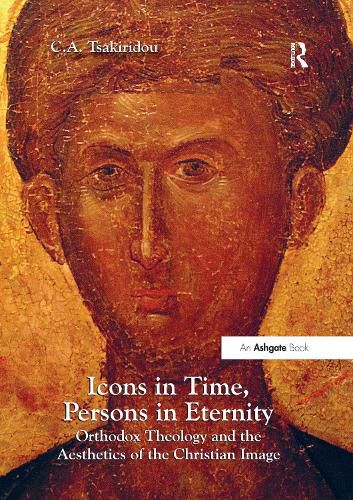Readings Newsletter
Become a Readings Member to make your shopping experience even easier.
Sign in or sign up for free!
You’re not far away from qualifying for FREE standard shipping within Australia
You’ve qualified for FREE standard shipping within Australia
The cart is loading…






Icons in Time, Persons in Eternity presents a critical, interdisciplinary examination of contemporary theological and philosophical studies of the Christian image and redefines this within the Orthodox tradition by exploring the ontological and aesthetic implications of Orthodox ascetic and mystical theology. It finds Modernist interest in the aesthetic peculiarity of icons significant, and essential for re-evaluating their relationship to non-representational art. Drawing on classical Greek art criticism, Byzantine ekphraseis and hymnography, and the theologies of St. Maximus the Confessor, St. Symeon the New Theologian and St. Gregory Palamas, the author argues that the ancient Greek concept of enargeia best conveys the expression of theophany and theosis in art. The qualities that define enargeia - inherent liveliness, expressive autonomy and self-subsisting form - are identified in exemplary Greek and Russian icons and considered in the context of the hesychastic theology that lies at the heart of Orthodox Christianity. An Orthodox aesthetics is thus outlined that recognizes the transcendent being of art and is open to dialogue with diverse pictorial and iconographic traditions. An examination of Ch'an (Zen) art theory and a comparison of icons with paintings by Wassily Kandinsky, Pablo Picasso, Mark Rothko and Marc Chagall, and by Japanese artists influenced by Zen Buddhism, reveal intriguing points of convergence and difference. The reader will find in these pages reasons to reconcile Modernism with the Christian image and Orthodox tradition with creative form in art.
$9.00 standard shipping within Australia
FREE standard shipping within Australia for orders over $100.00
Express & International shipping calculated at checkout
Icons in Time, Persons in Eternity presents a critical, interdisciplinary examination of contemporary theological and philosophical studies of the Christian image and redefines this within the Orthodox tradition by exploring the ontological and aesthetic implications of Orthodox ascetic and mystical theology. It finds Modernist interest in the aesthetic peculiarity of icons significant, and essential for re-evaluating their relationship to non-representational art. Drawing on classical Greek art criticism, Byzantine ekphraseis and hymnography, and the theologies of St. Maximus the Confessor, St. Symeon the New Theologian and St. Gregory Palamas, the author argues that the ancient Greek concept of enargeia best conveys the expression of theophany and theosis in art. The qualities that define enargeia - inherent liveliness, expressive autonomy and self-subsisting form - are identified in exemplary Greek and Russian icons and considered in the context of the hesychastic theology that lies at the heart of Orthodox Christianity. An Orthodox aesthetics is thus outlined that recognizes the transcendent being of art and is open to dialogue with diverse pictorial and iconographic traditions. An examination of Ch'an (Zen) art theory and a comparison of icons with paintings by Wassily Kandinsky, Pablo Picasso, Mark Rothko and Marc Chagall, and by Japanese artists influenced by Zen Buddhism, reveal intriguing points of convergence and difference. The reader will find in these pages reasons to reconcile Modernism with the Christian image and Orthodox tradition with creative form in art.